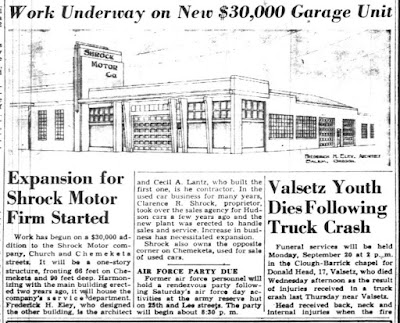As Salem Bike Vision says that "Union Street will be the key East-West Bike Corridor," I hope they do not lose sight of Chemeketa Street. It is twice is long as Union Street, going out to 24th instead of stopping at 12th, and it connects more directly to the heart of downtown. There is also now the proposed project on the old City Hall site, and housing conceptually proposed for the former State Insurance building site, both on key corners with Chemeketa. Union Street is crucial with its direct connection to the Union Street Bridge, but Chemeketa has always seemed more axial. Alas, the City has not improved it further, and the sharrows installed back in 2010 have seemed feeble and a temporizing dead-end rather than prelude to anything greater.
Chemeketa is pretty nice for walking, though, and on the north side of Chemeketa and Church, opposite the empty transit mall patio and the former Statesman offices, are two interesting midcentury modern buildings. And it turns out, their history is somewhat related.
 |
| Commercial Bank building (streetview, May 2012) |
The earlier one, on the northeast corner, is now occupied by Amerititle. It had been a Hudson dealership, Shrock Motor Company, constructed in at least two phases between 1946 and 1948. Here's a clip on the second phase on the alley. The architect, Frederick Eley, later competed for the new County Courthouse, whose commission went to Pietro Beluschi. Eley might be someone we return to later.
 |
| September 17th, 1948 |
In May of 1954 Hudson merged and formed American Motors Corporation. About the same time, and it cannot be a coincidence, Clarence Shrock sold the property.



































